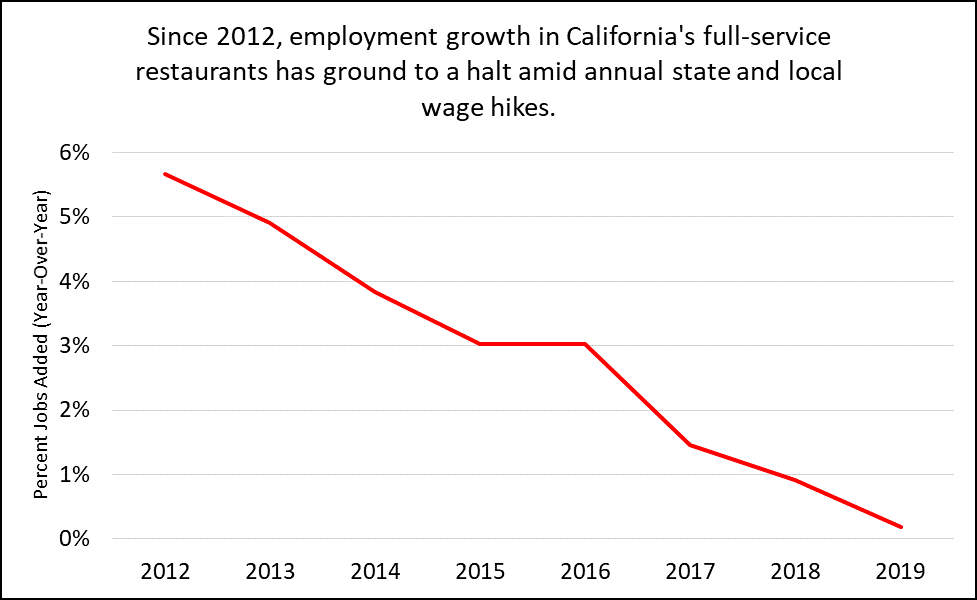Larry Elder is running in what appears to be a close race to replace current California Governor Gavin Newsom if voters elect to recall him. Elder says he is basing his campaign on “common sense” principles, and alarmed some Californians a few weeks ago when he said “the ideal minimum wage is $0.”
Some are calling Elder’s statement “completely out of touch” and “unfathomable” in California, which has the highest state minimum wage rate in the country at $14 per hour this year for businesses with more than 25 employees. But outraged pundits are missing the point: the $0 minimum wage argument goes back much farther than the California recall election — and illustrates the very harsh reality of steep minimum wage hikes.
In his book Basic Economics: A Citizen’s Guide to the Economy first published in 2000, economist Thomas Sowell writes:
Making it illegal to pay less than the given amount does not make a workers productivity worth that amount — and if it is not, that worker is likely to be unemployed. Yet minimum wage laws are almost always discussed politically in terms of the benefits they confer on workers receiving those wages.
Sowell then explains that for many workers who do become unemployed as a result of steep wage hikes, the effective wage is $0 per hour. This statement is supported by decades of economic research: raising minimum wages result in pay raises for some, but job loss (i.e. pay of $0 per hour) for many others.
Even the New York Times agrees–a 1987 op-ed titled “The Right Minimum Wage: $0.00” highlighted this very argument: “Raising the minimum wage by a substantial amount would price working poor people out of the job market.”
In fact, a review of nearly 30 years of economic research on minimum wages concludes that a majority of studies find mandated wage hikes reduce employment.
In the same interview as his statement about the $0 minimum wage, Elder stated that if elected governor, he has no intention of eliminating the minimum wage. Instead, he used the statement as an important thought experiment – why does the state get to set a magic “minimum wage” number without regard for the damaging effects for employers and employees?
The evidence in California indicates many employees have already felt these disastrous side effects, even though the minimum wage mandated by the state has climbed annually on its way to $15 in 2022.
The restaurant industry employs a majority of minimum wage earners, both in California and high-wage localities in the Golden State. Yet over the last decade in the restaurant industry, employment in full-service restaurants has been on the decline, as mandated minimum wages have increased.
The state as a whole has seen job growth slow down due to its drastic wage hikes, leaving behind job opportunities for Californians. California has marched its wages higher annually on the way to $15, and many localities currently adjust their own minimum wage levels to increase yearly beyond the state rate. According to data released by the Bureau of Labor Statistics, annual employment growth has dropped consistently since 2012, declining to only 0.18% growth in 2019.

San Francisco’s minimum wage has exceeded even California’s level, and Bureau of Labor Statistics data shows that the rate of employment growth declined steadily from 2011 to 2019, going negative in the last two years. In other words, as the local minimum wage soared by more than 57 percent up to $15.59 per hour, San Francisco’s restaurant employment growth plummeting, ending in a loss of over 1,200 full-service restaurant jobs since 2017 alone. This trend is mirrored in other West Coast, high wage cities like Portland, OR and Seattle, WA. Another study by researchers at Harvard Business School found that each $1 hike in San Francisco’s minimum wage increased the likelihood of restaurant closure by 14 percent, putting affiliated minimum wage-paying jobs at risk too. The situation has become so dire, San Francisco restaurateurs called the city’s market for new restaurants “non-viable.”
Another local example is the employment situation in Emeryville, California, one of the highest-wage cities in California and the nation. A study conducted by city officials found that restaurants struggled to remain open amid annual wage hikes: most businesses in operation in 2015 (when the increases were adopted) were no longer operating in 2019. They also surveyed surviving restaurants, and found more than half had decreased workers’ hours, and a third had laid off employees as a result of the annual wage increases.
Studies conducted in other regions experiencing steep wage hikes come to similar conclusions: government-mandated minimum wage increases result in job loss. As a result, employees who lose their jobs due to layoffs responding to wage hikes see their wages drop down to $0. For employees who do keep their jobs, the mandated wage does not guarantee they will see a net increase in earnings either – schedule cutbacks or benefits reductions mean even employees that retain their jobs under new minimum wages may see a reduction in their income.
While Larry Elder quickly signaled he would not actually eliminate California’s minimum wage, he brings light to an often-overlooked sacrifice of the policy. While it may seem a “no-brainer” politically to promise higher wages, the consequence for thousands of workers in California has been wages slashed to zero.
